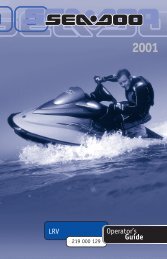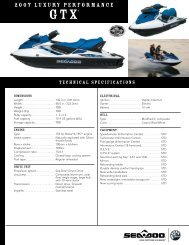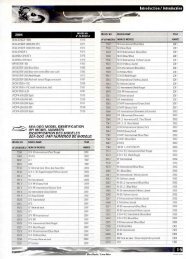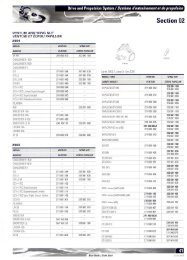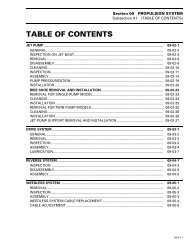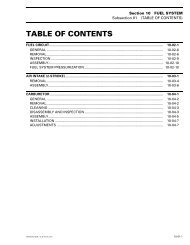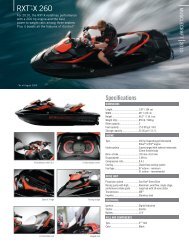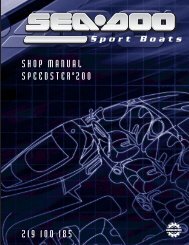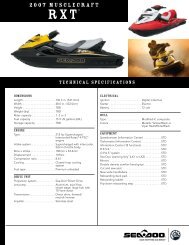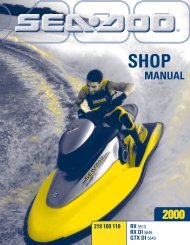warning - Sea-Doo.net
warning - Sea-Doo.net
warning - Sea-Doo.net
- No tags were found...
You also want an ePaper? Increase the reach of your titles
YUMPU automatically turns print PDFs into web optimized ePapers that Google loves.
The watercraft behaves differentlywith a passenger and requires greaterskill. The passenger should alwaysgrip the seat strap or grab handle.Reduce speed and avoid sharp turns.Avoid choppy water conditions whencarrying a passenger.CAUTION: Combustion engineneeds air to operate; consequentlythis watercraft can not be totallywatertight. Any maneuvers suchas figure eights etc., that causethe upper deck to be under watermay cause severe engine problemsdue to water ingestion. Refer toSPECIAL PROCEDURES and LIM-ITED WARRANTY contained in thisguide.Off-Power Assisted SteeringSystem (O.P.A.S.)The Off-Power Assisted Steering(O.P.A.S.) system uses a dual sidevanes design that assists the watercraftsteering in deceleration, toredirect watercraft path when steeringis turned after throttle has beenreleased or engine stopped.The side vanes on the rear sides of thehull, turn as the steering is turned toassist the watercraft turning. At first,carefully experiment turning with thissystem.Models with Sliding Side Vanes(O.P.A.S. System)When engine is running at approximately75% or more RPM, the sidevanes are automatically raised to upperposition since they are not requiredat that vehicle speed range.Between 30% and 75% engine RPM,side vanes are gradually raised fromlower position to upper position.F18K02Y 11. Side vane in upper positionWhen throttle is released and engineRPM drops, the side vanes are automaticallylowered thus assisting steeringcontrol.F18K03Y 11TYPICAL1. Side vanes turn following steeringmovementF18K01Y11. Side vane in lower position_____________________ 73



